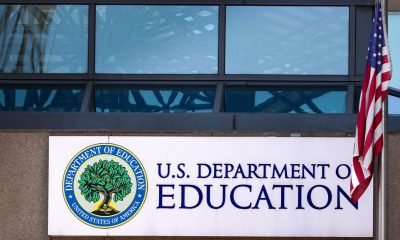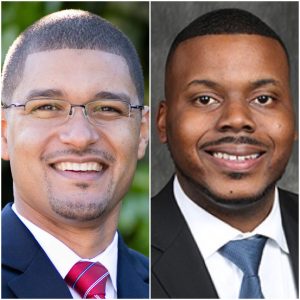#NNPA BlackPress
World AIDS Day 2022: Get on the Healthy Love Bus
NNPA NEWSWIRE — Earlier this year, Congresswoman Barbara Lee of Oakland released a statement of concerns regarding the rate of new Black infections, and new diagnoses. As of 2018, despite comprising just 13 percent of America’s population, African Americans represented 42 percent of all people living with HIV.
The post World AIDS Day 2022: Get on the Healthy Love Bus first appeared on BlackPressUSA.
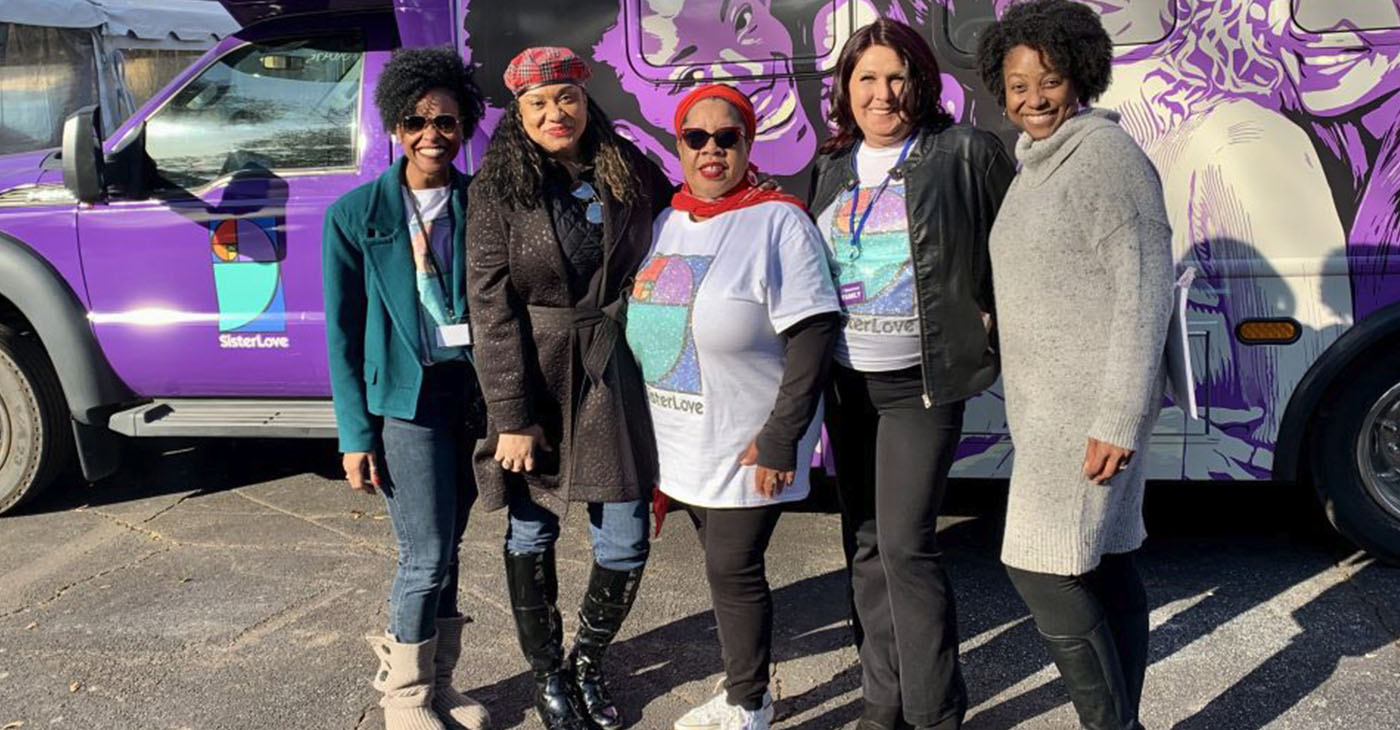
By Dianne Anderson | Precinct Reporter News Group
It’s one thing to be Black, Latinx or a woman trying to seek adequate healthcare for any problem, and it’s another to be any of those in addition to being gay and trying to get around biases built into the medical system.
Wiley Phillips, an epidemiologist at the LGBTQ center, finds it a bitter pill to take when she goes to the doctor, and they ask about her husband, but her partner is female.
She believes individuals end up delaying health care because they’re scared or uncomfortable going into providers’ offices.
“That’s more true for the already marginalized community of LGBTQ, the pockets or subpockets being blatantly discriminated against or feeling the impact of exclusion. It’s certainly a massive issue,” said Phillips, MPH and manager of health services at the center.
Another frequently ignored big issue is the impact of HIV/AIDS on straight women, who represent 19% of new diagnoses worldwide, mostly attributed to heterosexual sex.
But in America, Black women continue to experience the brunt of new cases among women.
“Black women are disproportionately affected by HIV as compared to women of other races/ethnicities. Although annual HIV infections remained stable overall among Black women from 2015 to 2019, the rate of new HIV infections among Black women is 11 times that of white women and four times that of Latina women,” the CDC reports.
In all for 2019, 26% of new HIV infections were among Black gay and bisexual men, 23% among Latino gay and bisexual men, and 45% among gay and bisexual men under the age of 35.
California Department of Public Health has some good news. From 2010 to 2020 the overall rate of new HIV diagnoses decreased by 37% among Black/African Americans 55% in the rate of new HIV diagnoses among Blacks 45-54 years old and a 15% decline in the rate of new HIV diagnoses among Black men 25-34 years old.
But the bad news is that for Black women, during that same time, it’s up 21% in the rate of new HIV diagnoses among Black women 13-24 years old.
Not helping matters, testing decreased through the pandemic as other diseases emerged. While the situation is better than even ten years ago, health providers stress that antiretroviral drugs only work when people actually take them.
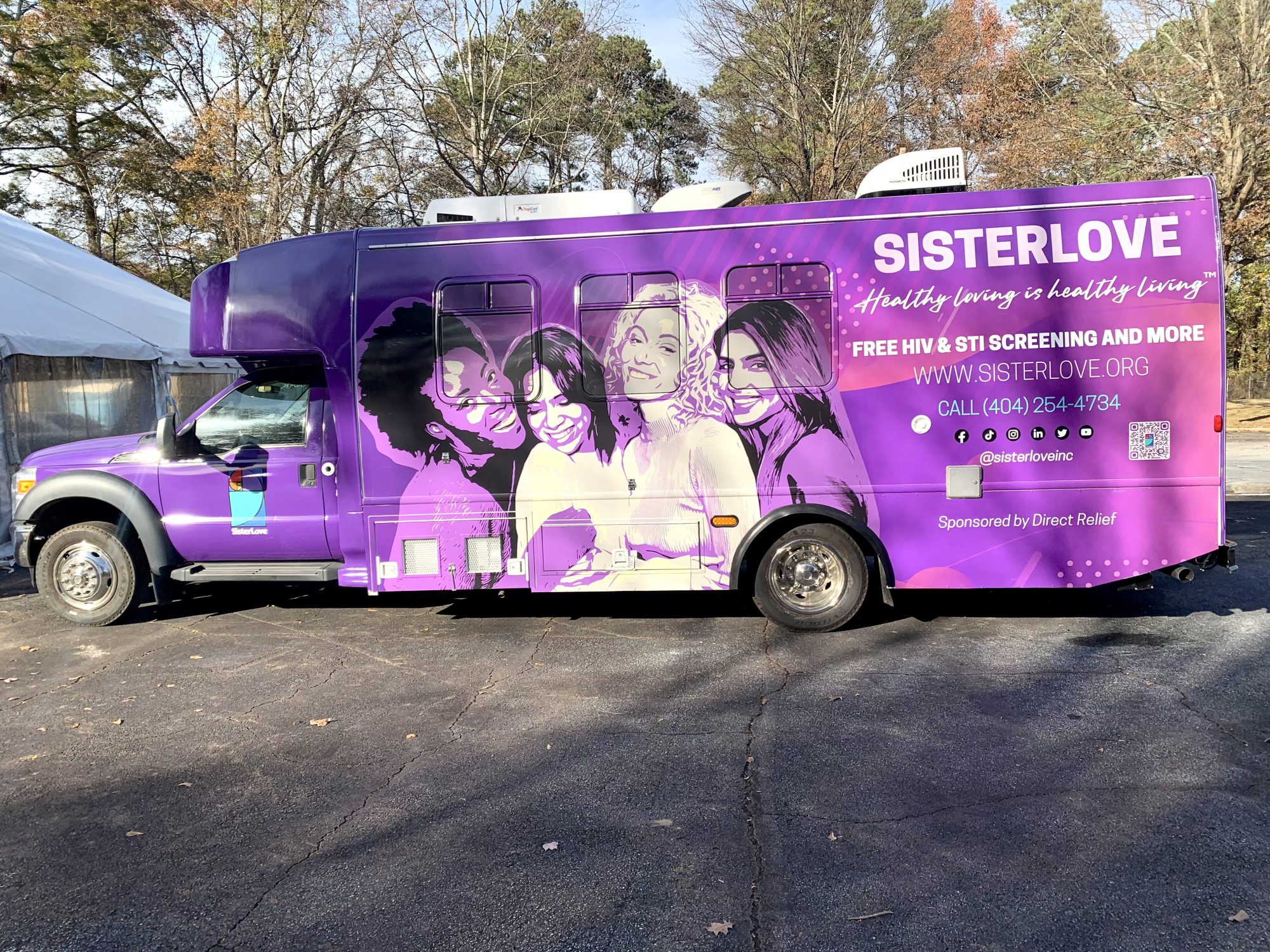
Phillips said their clinic is pushing to get more people in the door. In conjunction with World AIDS Day, she is working with the Long Beach Health Department for a health fair. They are planning a walk at her clinic that day, shuttling people back and forth to resources.
To her understanding, the clinic also experienced a decrease in walk-ins during the pandemic, which primarily was testing with Rapid HIV tests. They implemented precautions at that time, but they also experienced staffing shortages.
“Ultimately, [it] led us to not having the capacity to have walk-in and regularly booked appointments, which is something we’re trying to get back to. The pandemic was a large barrier in getting people tested,” she said.
Rapid testing results are available within 60 seconds and she is trying to get the word out to the community that it is very accurate. They also have different options, including a more extensive panel, available for those who prefer more conventional tests.
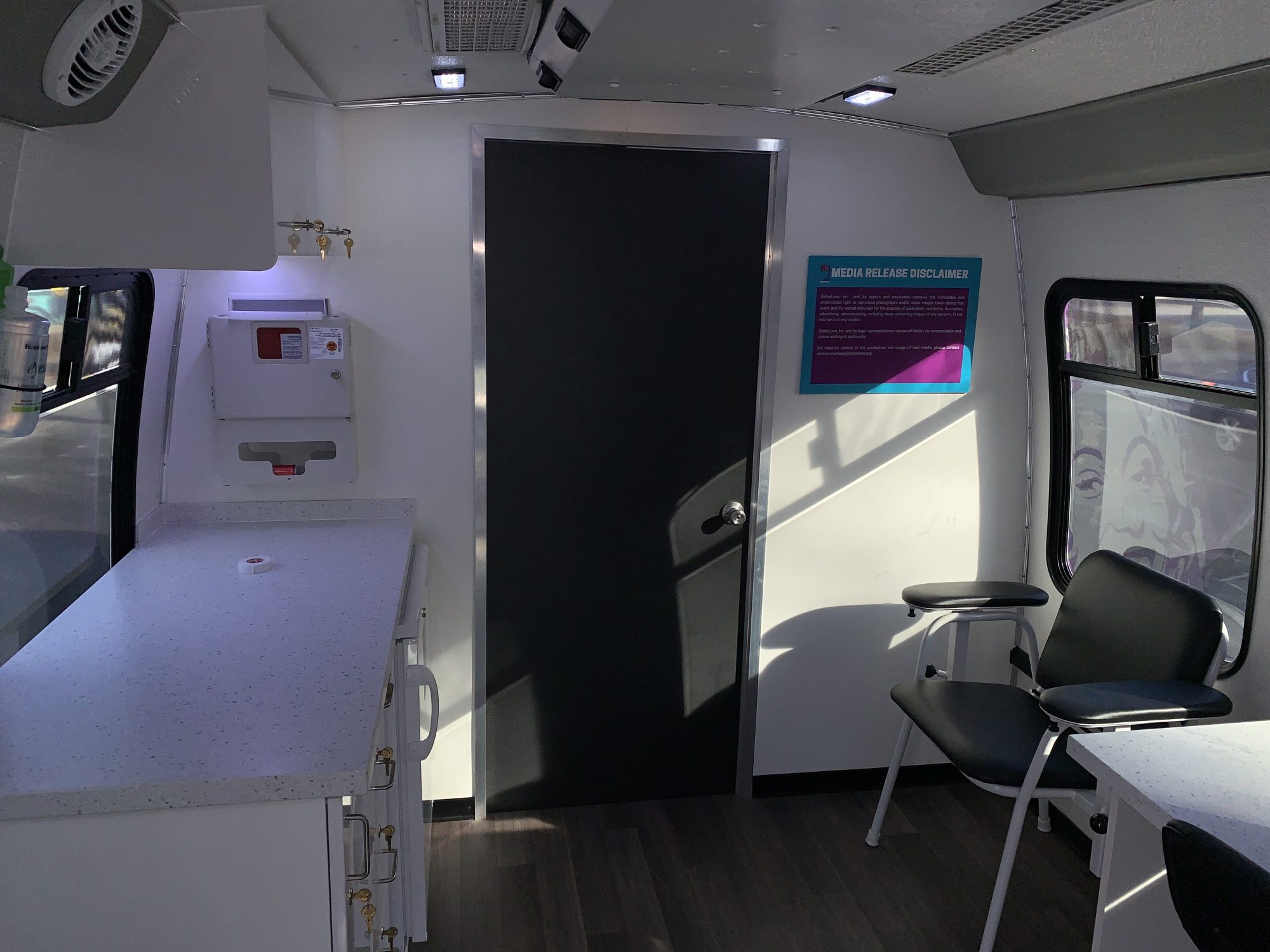
Those tests would be great to have at home, but she said that approach could hinder accurate documentation. HIV/AIDS is an infectious disease, and the CDC and FDA want to monitor cases within communities to determine the rate of spread.
To determine an accurate representation of infection in the Long Beach community, she said one of their grants requires that they meet specific qualifications throughout the year, which is to report at least 1% of infectivity for HIV.
It’s not that they want to see 1% infections, but she said they must get as many rapid tests out into the community as possible to pull back real numbers.
“Some might think isn’t it good to have a lower HIV infectivity rate? We know that’s just not the reality with our population. We know with Long Beach there is a high population of people living with HIV,” she said, which lately includes a large population of Latinx men.
With the holidays coming up, testing is expected to be busier than usual, the same as the weeks following LGBT Pride. The center is located at 2017 East 4th Street in Long Beach.
“I would imagine that the holidays would be a time when people are more conscious of their status, and hope that it’s an initiative to get people in the door,” she said. “We want to help everybody and provide any service we can to provide prevention treatment, education, or everything in between.”
Earlier this year, Congresswoman Barbara Lee of Oakland released a statement of concerns regarding the rate of new Black infections, and new diagnoses. As of 2018, despite comprising just 13 percent of America’s population, African Americans represented 42 percent of all people living with HIV.
“After 40 years of combating this disease, we know that we cannot end this epidemic without addressing the racial injustice that prevents Black communities from receiving the medical care they deserve. I am proud to reintroduce this important resolution to increase awareness, spark conversations, highlight the work to reduce HIV in Black or African American communities, and show support for people with and vulnerable to HIV in these communities,” she said.
For more information on services and testing, see https://www.centerlb.org/ or call (562) 434-4455
https://www.longbeach.gov/health/services/clinics/hiv-aids-clinic/
To see the Jama study of Black Women and HIV Prevention, http://bit.ly/3UfGqim.
This article originally appeared in The Precinct Reporter News Group.
The post World AIDS Day 2022: Get on the Healthy Love Bus first appeared on BlackPressUSA.
#NNPA BlackPress
Chavis and Bryant Lead Charge as Target Boycott Grows
BLACKPRESSUSA NEWSWIRE — Surrounded by civil rights leaders, economists, educators, and activists, Bryant declared the Black community’s power to hold corporations accountable for broken promises.

By Stacy M. Brown
BlackPressUSA.com Senior National Correspondent
Calling for continued economic action and community solidarity, Dr. Jamal H. Bryant launched the second phase of the national boycott against retail giant Target this week at New Birth Missionary Baptist Church in Atlanta. Surrounded by civil rights leaders, economists, educators, and activists, Bryant declared the Black community’s power to hold corporations accountable for broken promises. “They said they were going to invest in Black communities. They said it — not us,” Bryant told the packed sanctuary. “Now they want to break those promises quietly. That ends tonight.” The town hall marked the conclusion of Bryant’s 40-day “Target fast,” initiated on March 3 after Target pulled back its Diversity, Equity, and Inclusion (DEI) commitments. Among those was a public pledge to spend $2 billion with Black-owned businesses by 2025—a pledge Bryant said was made voluntarily in the wake of George Floyd’s murder in 2020.“No company would dare do to the Jewish or Asian communities what they’ve done to us,” Bryant said. “They think they can get away with it. But not this time.”
The evening featured voices from national movements, including civil rights icon and National Newspaper Publishers Association (NNPA) President & CEO Dr. Benjamin F. Chavis Jr., who reinforced the need for sustained consciousness and collective media engagement. The NNPA is the trade association of the 250 African American newspapers and media companies known as The Black Press of America. “On the front page of all of our papers this week will be the announcement that the boycott continues all over the United States,” said Chavis. “I would hope that everyone would subscribe to a Black newspaper, a Black-owned newspaper, subscribe to an economic development program — because the consciousness that we need has to be constantly fed.” Chavis warned against the bombardment of negativity and urged the community to stay engaged beyond single events. “You can come to an event and get that consciousness and then lose it tomorrow,” he said. “We’re bombarded with all of the disgust and hopelessness. But I believe that starting tonight, going forward, we should be more conscious about how we help one another.”
He added, “We can attain and gain a lot more ground even during this period if we turn to each other rather than turning on each other.” Other speakers included Tamika Mallory, Dr. David Johns, Dr. Rashad Richey, educator Dr. Karri Bryant, and U.S. Black Chambers President Ron Busby. Each speaker echoed Bryant’s demand that economic protests be paired with reinvestment in Black businesses and communities. “We are the moral consciousness of this country,” Bryant said. “When we move, the whole nation moves.” Sixteen-year-old William Moore Jr., the youngest attendee, captured the crowd with a challenge to reach younger generations through social media and direct engagement. “If we want to grow this movement, we have to push this narrative in a way that connects,” he said.
Dr. Johns stressed reclaiming cultural identity and resisting systems designed to keep communities uninformed and divided. “We don’t need validation from corporations. We need to teach our children who they are and support each other with love,” he said. Busby directed attendees to platforms like ByBlack.us, a digital directory of over 150,000 Black-owned businesses, encouraging them to shift their dollars from corporations like Target to Black enterprises. Bryant closed by urging the audience to register at targetfast.org, which will soon be renamed to reflect the expanding boycott movement. “They played on our sympathies in 2020. But now we know better,” Bryant said. “And now, we move.”
#NNPA BlackPress
The Department of Education is Collecting Delinquent Student Loan Debt
BLACKPRESSUSA NEWSWIRE — the Department of Education will withhold money from tax refunds and Social Security benefits, garnish federal employee wages, and withhold federal pensions from people who have defaulted on their student loan debt.

By April Ryan
Trump Targets Wages for Forgiven Student Debt
The Department of Education, which the Trump administration is working to abolish, will now serve as the collection agency for delinquent student loan debt for 5.3 million people who the administration says are delinquent and owe at least a year’s worth of student loan payments. “It is a liability to taxpayers,” says White House Press Secretary Karoline Leavitt at Tuesday’s White House Press briefing. She also emphasized the student loan federal government portfolio is “worth nearly $1.6 trillion.” The Trump administration says borrowers must repay their loans, and those in “default will face involuntary collections.” Next month, the Department of Education will withhold money from tax refunds and Social Security benefits, garnish federal employee wages, and withhold federal pensions from people who have defaulted on their student loan debt. Leavitt says “we can not “kick the can down the road” any longer.”
Much of this delinquent debt is said to have resulted from the grace period the Biden administration gave for student loan repayment. The grace period initially was set for 12 months but extended into three years, ending September 30, 2024. The Trump administration will begin collecting the delinquent payments starting May 5. Dr. Walter M. Kimbrough, president of Talladega College, told Black Press USA, “We can have that conversation about people paying their loans as long as we talk about the broader income inequality. Put everything on the table, put it on the table, and we can have a conversation.” Kimbrough asserts, “The big picture is that Black people have a fraction of wealth of white so you’re… already starting with a gap and then when you look at higher education, for example, no one talks about Black G.I.’s that didn’t get the G.I. Bill. A lot of people go to school and build wealth for their family…Black people have a fraction of wealth, so you already start with a wide gap.”
According to the Education Data Initiative, https://educationdata.org/average-time-to-repay-student-loans It takes the average borrower 20 years to pay their student loan debt. It also highlights how some professional graduates take over 45 years to repay student loans. A high-profile example of the timeline of student loan repayment is the former president and former First Lady Barack and Michelle Obama, who paid off their student loans by 2005 while in their 40s. On a related note, then-president Joe Biden spent much time haggling with progressives and Democratic leaders like Senators Elizabeth Warren and Chuck Schumer on Capitol Hill about whether and how student loan forgiveness would even happen.
#NNPA BlackPress
VIDEO: The Rev. Dr. Benjamin F. Chavis, Jr. at United Nations Permanent Forum on People of African Descent
https://youtu.be/Uy_BMKVtRVQ Excellencies: With all protocol noted and respected, I am speaking today on behalf of the Black Press of America and on behalf of the Press of People of African Descent throughout the world. I thank the Proctor Conference that helped to ensure our presence here at the Fourth Session of the […]

Excellencies:
-

 Activism4 weeks ago
Activism4 weeks agoOakland Post Endorses Barbara Lee
-

 Activism4 weeks ago
Activism4 weeks agoOakland Post: Week of March 28 – April 1, 2025
-

 Activism3 weeks ago
Activism3 weeks agoOakland Post: Week of April 2 – 8, 2025
-

 #NNPA BlackPress3 weeks ago
#NNPA BlackPress3 weeks agoTrump Profits, Black America Pays the Price
-

 Activism2 weeks ago
Activism2 weeks agoOakland Post: Week of April 9 – 15, 2025
-

 #NNPA BlackPress3 weeks ago
#NNPA BlackPress3 weeks agoHarriet Tubman Scrubbed; DEI Dismantled
-

 #NNPA BlackPress3 weeks ago
#NNPA BlackPress3 weeks agoLawmakers Greenlight Reparations Study for Descendants of Enslaved Marylanders
-

 #NNPA BlackPress3 weeks ago
#NNPA BlackPress3 weeks agoTrump Targets a Slavery Removal from the National Museum of African-American History and Culture




